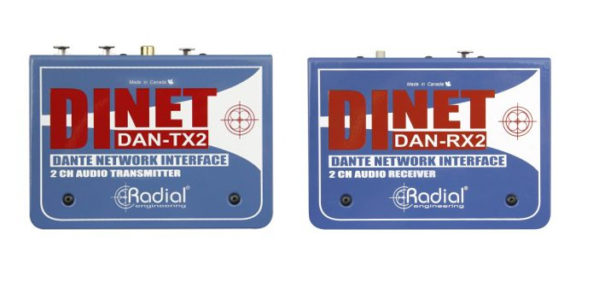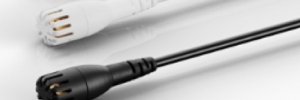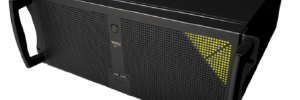Radial DiNET DAN: audio analógico a través de Dante o AES67
El transmisor DAN-TX2 y receptor el DinNET DAN-RX2 son dos soluciones que permiten enviar y recibir dos canales de audio analógico, a través de una red digital Dante o AES67, con convertidores de 24 bits/96 KHz.
Radial Engineering, marca representada en España por SeeSound, ha lanzado al mercado dos nuevos dispositivos para audio a través de Dante o AES67: DiNET DAN-TX2 y DAN-RX2.
Estos equipos proporcionan una solución sencilla y robusta para enviar o recibir dos canales de audio analógico a través de una red digital habilitada para Dante o AES67, empleando convertidores de alta calidad de 24 bits/96 KHz para un alto rendimiento de audio.
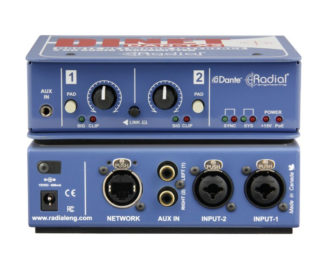 El transmisor DinNET DAN-TX2 es capaz transformar cualquier señal de audio de nivel de línea a una red Dante o AES67, utilizando varios tipos de conectores para adaptarse a múltiples aplicaciones y dispositivos fuente.
El transmisor DinNET DAN-TX2 es capaz transformar cualquier señal de audio de nivel de línea a una red Dante o AES67, utilizando varios tipos de conectores para adaptarse a múltiples aplicaciones y dispositivos fuente.
Se puede acceder a los dos canales de entrada a través de conectores combo XLR/jack para equipos de audio profesional balanceados, RCA para señales desbalanceadas y un conector estéreo de 3.5 mm (mini-jack) para usar con smartphones y tabletas. Se proporcionan controles de nivel individuales para cada canal o se pueden vincular a un único control para una uso más fácil con fuentes estéreo.
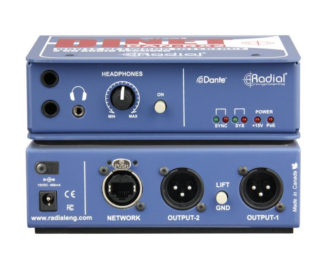 On the other hand, el receptor DinNET DAN-RX2 puede conectarse en cualquier lugar de la red y permite recibir dos canales de audio digital de una red Dante o AES67 convirtiéndolas a señales analógicas balanceadas con salida XLR, para una distribución fiable a sistemas de PA, altavoces autoamplificados o cualquier otro dispositivo, as needed.
On the other hand, el receptor DinNET DAN-RX2 puede conectarse en cualquier lugar de la red y permite recibir dos canales de audio digital de una red Dante o AES67 convirtiéndolas a señales analógicas balanceadas con salida XLR, para una distribución fiable a sistemas de PA, altavoces autoamplificados o cualquier otro dispositivo, as needed.
También dispone de una salida de auriculares, con salidas jack de 3,5 mm and 1/4 de pulgada para utilizarlo como un sistema de monitoreo personal o con fines de test.
La diferencia de los dos modelos es la conexión Ethernet con conector EtherCon con bloqueo (más robusto) y posibilidad de instalarlos en rack mediante adaptadores opcionales.
La alimentación de cada dispositivo se puede suministrar con un adaptador de 15 V o mediante Power over Ethernet (Poe), y ambas fuentes de alimentación se pueden utilizar simultáneamente para redundancia.
You liked this article?
Subscribe to our Feed And you won't miss a thing.



